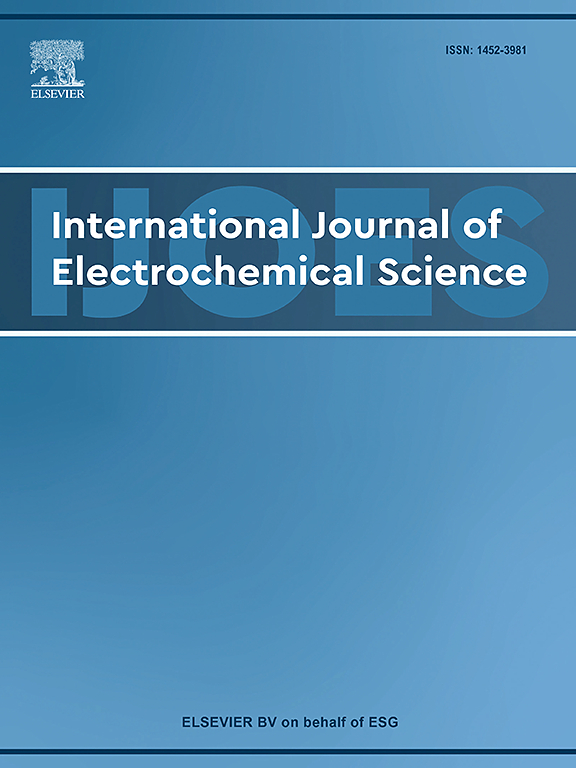通过循环伏安法加强对磁铁矿纳米颗粒电合成的控制
IF 1.3
4区 化学
Q4 ELECTROCHEMISTRY
International Journal of Electrochemical Science
Pub Date : 2025-01-20
DOI:10.1016/j.ijoes.2025.100956
引用次数: 0
摘要
在这项工作中,我们报道了在NaCl溶液中使用碳钢牺牲阳极,利用循环伏安法电合成磁铁矿(Fe3O4)纳米颗粒。在NaCl浓度为0.01 M和0.1 M时,扫描速率为1 ~ 20 mV/s。利用傅里叶变换红外光谱(FTIR)、扫描电镜(SEM)、x射线衍射(XRD)和动态光散射(DLS)进行综合表征表明,较慢的扫描速率和较高的电解质浓度促进了磁铁矿良好结晶的形成。在较高的扫描速率和较低的NaCl浓度下,观察到中间氧化铁相,如针铁矿(α-FeOOH)和绢云母(γ-FeOOH)。在0.1 M NaCl中,以1 mV/s的扫描速率获得了最小的晶体尺寸(18 nm),证实了较低的扫描速率有利于更小、更均匀的纳米颗粒。这项工作强调了扫描速率和电解质浓度对纳米颗粒尺寸、相纯度和形貌的影响,为优化合成提供了控制这些参数的见解。这一发现对水修复和能源储存技术等环境应用具有重要意义。本文章由计算机程序翻译,如有差异,请以英文原文为准。
Enhanced control of magnetite nanoparticle electrosynthesis through cyclic voltammetry
In this work, we report the electrosynthesis of magnetite (Fe3O4) nanoparticles using cyclic voltammetry with a carbon steel sacrificial anode in NaCl solutions. The study explored scan rates between 1 and 20 mV/s in NaCl concentrations of 0.01 M and 0.1 M. Comprehensive characterization using Fourier-transform infrared spectroscopy (FTIR), scanning electron microscopy (SEM), X-ray diffraction (XRD), and dynamic light scattering (DLS) revealed that the slower scan rates and higher electrolyte concentrations promoted the formation of well-crystallized magnetite. At higher scan rates and lower NaCl concentrations, intermediate iron oxide phases such as goethite (α-FeOOH) and lepidocrocite (γ-FeOOH) were observed. The smallest crystallite size (18 nm) was obtained at 1 mV/s in 0.1 M NaCl, confirming that lower scan rates favor smaller and more uniform nanoparticles. This work highlights the influence of scan rate and electrolyte concentration on nanoparticle size, phase purity, and morphology, offering insights into controlling these parameters for optimized synthesis. The findings have significant implications for environmental applications such as water remediation and energy storage technologies.
求助全文
通过发布文献求助,成功后即可免费获取论文全文。
去求助
来源期刊
CiteScore
3.00
自引率
20.00%
发文量
714
审稿时长
2.6 months
期刊介绍:
International Journal of Electrochemical Science is a peer-reviewed, open access journal that publishes original research articles, short communications as well as review articles in all areas of electrochemistry: Scope - Theoretical and Computational Electrochemistry - Processes on Electrodes - Electroanalytical Chemistry and Sensor Science - Corrosion - Electrochemical Energy Conversion and Storage - Electrochemical Engineering - Coatings - Electrochemical Synthesis - Bioelectrochemistry - Molecular Electrochemistry

 求助内容:
求助内容: 应助结果提醒方式:
应助结果提醒方式:


